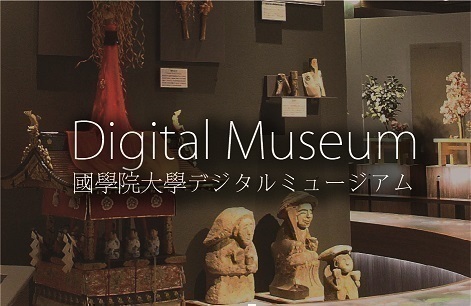- トップ
- Encyclopedia of Shinto
- Izumo kokusō
Encyclopedia of Shinto
| Main Menu: | |
| Links: |
詳細表示 (Complete Article)
| カテゴリー1: | 3. Institutions and Administrative Practices |
|---|---|
| カテゴリー2: | Officiants |
| Title | Izumo kokusō |
| Text | The kuni no miyatsuko of the ancient province of Izumo (the eastern portion of present-day Shimane Prefecture). Even after the dissolution of the Ritsuryō system, the term has persisted as a title for the position of head ritualist at Izumo Taisha through to the present day. The term is usually read "kuni no miyatsuko," but at Izumo it is presently read as "kokusō." In ancient times the kokusō was charged with both governance and ritual affair, but after the establishment of the Ritsuryō state, most of the kuni no miyatsuko lost their administrative function. However, in the case of Izumo, the administrative office remained, with the kokusō fulfilling the role of gunji (district head) in the Ou district. However, in 798 the dual administration of Izumo and the Ou district was abolished (in a Daijōkan edict regarding the administration of districts, the seventh chapter of the Ruijū sandai kyaku), and the administrative responsibilities of the office diminished. It is probable that thereafter the office of the kokusō left its home area in Ou district's Ōba (the southern outskirts of present-day Matsue City) and moved to Kizuki (now called Taisha Town) and engaged primarily in ritual at the Kizuki Taisha, the predecessor to modern-day Izumo Taisha. The Izumo kokusō are said to be descended from the kami Amenohohi. At Izumo, they have worshiped Amenohohi for many generations in place of Ōkuninushi who, after handing over the land to Amaterasu's descendants (kuniyuzuri), had been ordered by Takamimusuhi: "Ōnamuchi (Ōkuninushi), you will perform rites for Amenohohi no mikoto." (this is related in one writing of the second chapter of Nihon shoki) Even now, the descendants of the Izumo kokusō, as the gūji (head priests) of Izumo Taisha, perform these rites. In ancient times the kokusō bore the surname Izumo no Omi. One documentary source for the establishment of this office is found in the kokusō chapter of the Sendai kuji hongi. According to this source, the eleventh-generation successor of Amenohohi no mikoto, Ugazukunu, was made kokusō during the reign of Emperor Sujin. However, another theory holds that the establishment of the office of the Izumo kokusō came in the latter half of the fifth or first half of the sixth century. The office of the Izumo kokusō was regarded as more important than other kokusō by the imperial court. This emphasis is represented by the fact that in the Jōgangishiki procedures for kokusō appointment ceremonies are recorded only for the Izumo kokusō and the kuni no miyatsuko of Ki Province (Ki no kuni no miyatsuko). The importance of the office was also symbolized by the newly appointed Izumo kokusō's offering of Izumo kokusō kamu yogoto (see norito) at court. In the early modern period, following the receipt of a special imperial edict from Emperor Reigen in 1667, both the Yoshida and Shirakawa houses (charged to administer the affairs of Shinto) were prohibited from interfering with the Izumo kokusō, affirming the autonomy of the office. Prior to that edict, the office had divided into two lineages on the fifth day of the sixth month in 1343. The fifty-fifth generation Izumo kokusō Takamune took the surname Senge, while his younger brother Sadataka took the surname Kitajima. Thereafter, the rites and lands of the Kizuki Shrine were divided, so that the Senge were in charge of rites during odd-number months, while the Kitajima officiated in even-number months, a practice that continued until the reform of the shrine system in 1871. Both houses were given the aristocratic title of danshaku (baron) in the Meiji era, at the time of the eightieth-generation Izumo kokusō, Senge Takatomi, and the seventy-sixth generation kokusō Kitajima Nakanori. The Izumo kokusō was revered not only as a gūji who performed shrine rites, but it was also believed that he could become an oracle (mitsue shiro). The kokusō accession ritual, called the hitsugi shinji, takes place without observing mourning for the preceding kokusō. Up to the end of the Edo period this rite was conducted at the Kamosu Shrine in the kokusō's area of origin, where the successor inherited "sacred fire" and "sacred water." However, now it has come to be performed at a special place in the kokusō's official residence called the ohidokoro. The central part of the ceremony involved the new kokusō sharing a meal of offerings (shinsen) prepared with the "sacred fire and water" with the kami, receiving the spirit power (reii) of the kami, and inheriting the spirit (mitama) of Amenohohi to take on the religious personality of the Izumo kokusō. Thereafter, in order to maintain ritual purity, the Izumo kokusō did not mix with the secular world and only ate food prepared with the sacred fire at the ohidokoro in his residence. He observed such strict abstinences (kessai) and taboos (imi) in daily life that he was believed to be a manifestation (suijaku) of the kami. Izumo suisei zuihitsu of 1694 states that in the inner sanctuary of the Kizuki Shrine's honden the seat for the kokusō is located between the shintai (object of worship) and the offerings, and that offerings were presented facing both the kokusō and the shintai, suggesting that the kokusō had also become an object of faith. From early Meiji until the present, the tradition of abstinence (kessai) and conducting hidokoro rites every morning continues, but the practice of cooking all food on a separate fire has been discontinued. — Matsunaga Naomichi |




